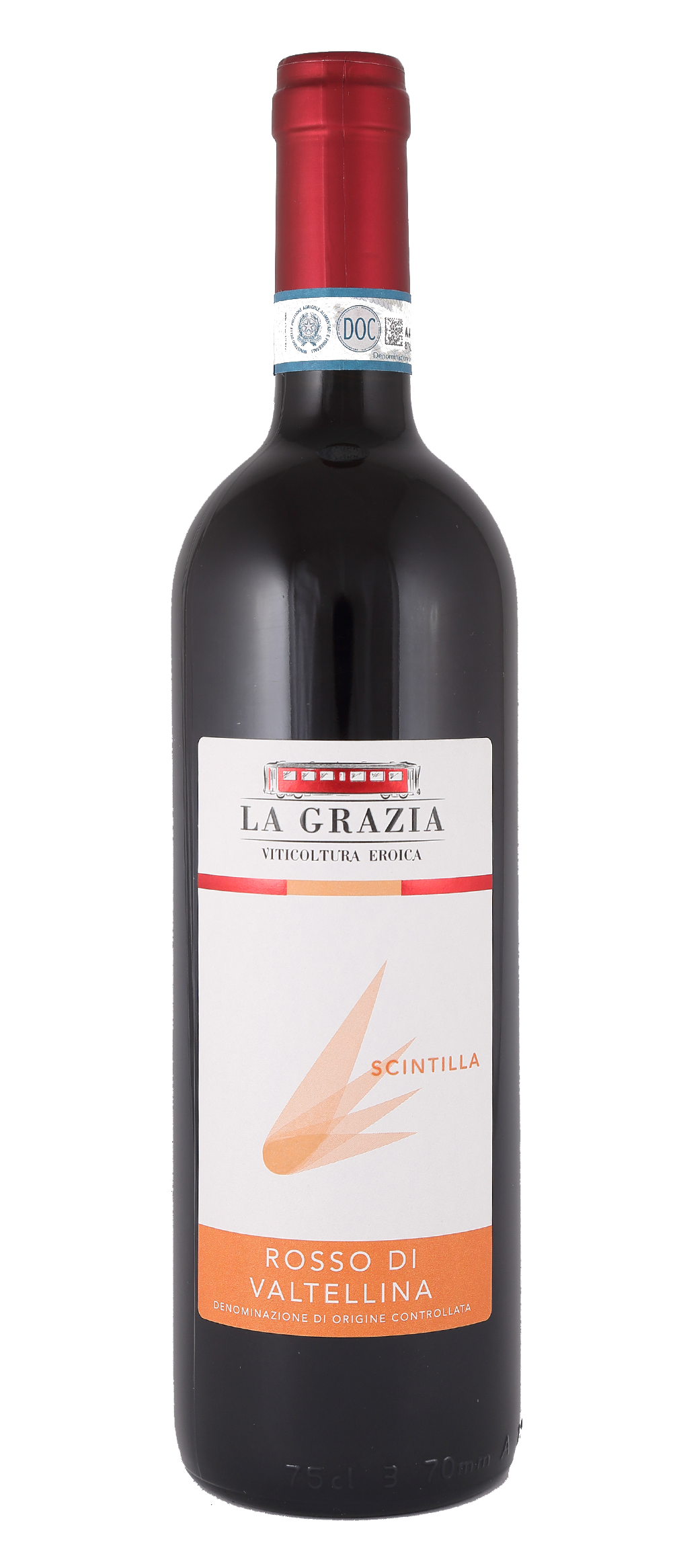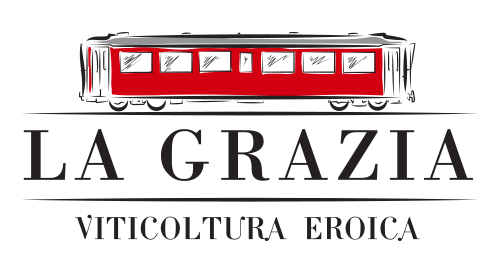
Rosso di Valtellina
Controlled Denomination of Origin
The origin (the vine, the grape)
Many vineyards at mid-altitude in the Tirano municipality, almost further east than the Valtellina vineyard area, ripen later on and present heterogeneous ripening times for Nebbiolo – Chiavennasca grapes.
In virtue of their innate specificity, they produce a certain amount of bunches of grapes that are slightly smaller in size and particularly suitable for raisining, for the production of Sforzato. The identification and harvesting of these bunches for raisining normally takes place 10 – 12 days before overripening and the vine plants are relieved of a good part of their load. Remaining grapes, with a good acidic profile, capitalise all the plant’s energy and ripen subtly, yet to achieve their full potential, palpable in refined aromatic precursors which will later enrich the wine.
The grapes give rise to “Scintilla”.
The Cellar
On average, these grapes are collected in crates in around mid October. They are then pressed, de-stemmed and before the start of fermentation, undergo a brief cold maceration process (+10°C). This is followed by tumultuous fermentation, regularly carried out with a top layer of floating pomace, reimmersed in must on a daily basis. Pressing is carried out after just 5-6 days of maceration, followed by the first removal of lees.
The wine is then aged in small stainless steel tanks, where malolactic fermentation takes place.
In the following year in June, the harvest is bottled and sold.
In the glass
A transparent ruby red of medium intensity but extremely vibrant and luminous. Of medium olfactory strength, it is characterised by a fruity floral finesse (wood violet, unripe hazelnut), is persistent and captivating. On the palate its expression is never overwhelming and is extremely well-balanced.
An appealing, subtle yet durable tannin flavour highlights the specificity of mountain Nebbiolo. Harmonious in its freshness and savoury flavour, perfect served with traditional local cuisine (pizzoccheri, polenta), charcuterie and alpine soups.
Evolution
In virtue of its origin and organoleptic components, despite being suitable for immediately consumption, this wine is equally capable of withstanding medium-long ageing periods in the bottle (3 – 7 years). Longer conservation evolves the wine’s flavour and olfactory qualities, resulting in slightly spicy and medicinal notes.
